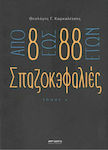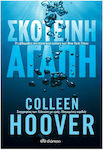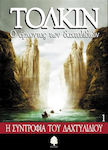Skroutz Buyers Protection
Αναζητώντας τον Χαμένο Χρόνο: Σόδομα και ΓόμορραCode: 181434
- Author: Marcel Proust
- Publisher: Vivliopoleion tis Estias
- Μορφή: Soft Cover
- Έτος έκδοσης: 2001
- Αριθμός σελίδων: 508
- Κωδικός ISBN-13: 9789600509939
- Διαστάσεις: 24×17
Marcel Proust
Buy together

Greek Fiction Books
Αναζητώντας τον Χαμένο Χρόνο: Στον Ίσκιο των Ανθισμένων Κοριτσιών
from 18,46 €Added




 Top rated
Top rated
 Top rated
Top ratedBiographies & Memoirs
Μια Φυσιολογική Ζωή, Actions and escapes of a bounty hunter
Ad from SilverProductsAdded
Similar products
All shops
Prices are calculated for:Malta, Other Payment Options
- 21,11 €
- 24,14 €
- 21,30 €
- 25,45 €
- 28,40 €
- 19,90 €
- 22,72 €
- 22,85 €
- 28,40 €
Description
Paul Zannas presented the section "Sodom and Gomorrah" with the following words:
"Sodom and Gomorrah" ("Sodome et Gomorrhe"), the fourth section of "In Search of Lost Time," is the last section that was published during Marcel Proust's lifetime (the remaining three will be published from 1923 to 1927, based on the author's manuscripts).
"Sodom and Gomorrah I" was first published in 1921 in the same volume as the second part of the section "The Guermantes Way." A year later, "Sodom and Gomorrah II" was released in three volumes.
Both the rather short first part and the four longer chapters that make up the second part have subtitles that roughly define their content.
Marcel Proust brings a new perspective to his novel in this section. The discovery of the role of homosexuality - with a detailed analysis of homosexual relationships and their typology - explains and retroactively defines the behavior of certain characters, especially Baron de Charlus.
Under this new perspective, the reception of Princess de Guermantes will be examined, where the description of aristocratic or pseudo-aristocratic mentality and behavior continues relentlessly, especially in relation to the Dreyfus affair that unsettles French society.
This new perspective will also play an important role in shaping the narrator's relationship with Albertine during their second stay in Balbec: Gomorrah will fuel the narrator's love and jealousy (here, the old love story of Swann and Odette is repeated, but with completely different dimensions in the faces of Albertine and the narrator).
With the second arrival in Balbec - in the pages titled "Heart Palpitations" - Proust creates one of the most beautiful examples of his great art. Comic elements in the present time intertwine with memories of the first stay, and the presence of the now deceased grandmother gains another, more striking truth. Present time and past time, life and death, a more vivid memory than the present dead time, dream and reality, are woven together to connect us with the past of the narrative and the narrative that will follow.
The novel continues with the evening at Madame Verdurin's. In the circle of the "little society," apart from the narrator, Baron de Charlus and Morel, the Cambremers couple and the older "faithful" will appear. Description of provincial pseudo-aristocratic mentality, emerging petit-bourgeoisie, with a plethora of comic images and satirical jabs that reveal the most contradictory characteristics that coexist in each person.
At the center of this part is the relationship between Baron de Charlus and Morel, which will take on other, tragic dimensions in the following sections, in relation to the Verdurin couple. At the same time, the narrator's bond with Albertine develops, with jealousy being the dominant element, mainly in suspicions about the girl's homosexual relationships.
Around the characters that Proust describes with vivid colors, the natural setting also comes to life: the landscapes, the small train stations that give the wise but pedantic Brichot the opportunity to explain the etymology of each name.
The changes and deterioration of each name emphasize the sense of temporal evolution and change, which is simultaneously observed in social relationships and in the psychology and behavior of individuals.
Thus, Proust completes the presentation and analysis of certain issues that have already preoccupied him, while at the same time preparing for the most dramatic conflicts and events that will follow.
Specifications
Specifications
- Format
- Soft Cover
- Number of Pages
- 508
- Publication Date
- 2001
- Dimensions
- 24x17 cm
Additional Specifications
- Award winning
- No
- Transferred to the Screen
- No
Important information
Specifications are collected from official manufacturer websites. Please verify the specifications before proceeding with your final purchase. If you notice any problem you can report it here.






























































